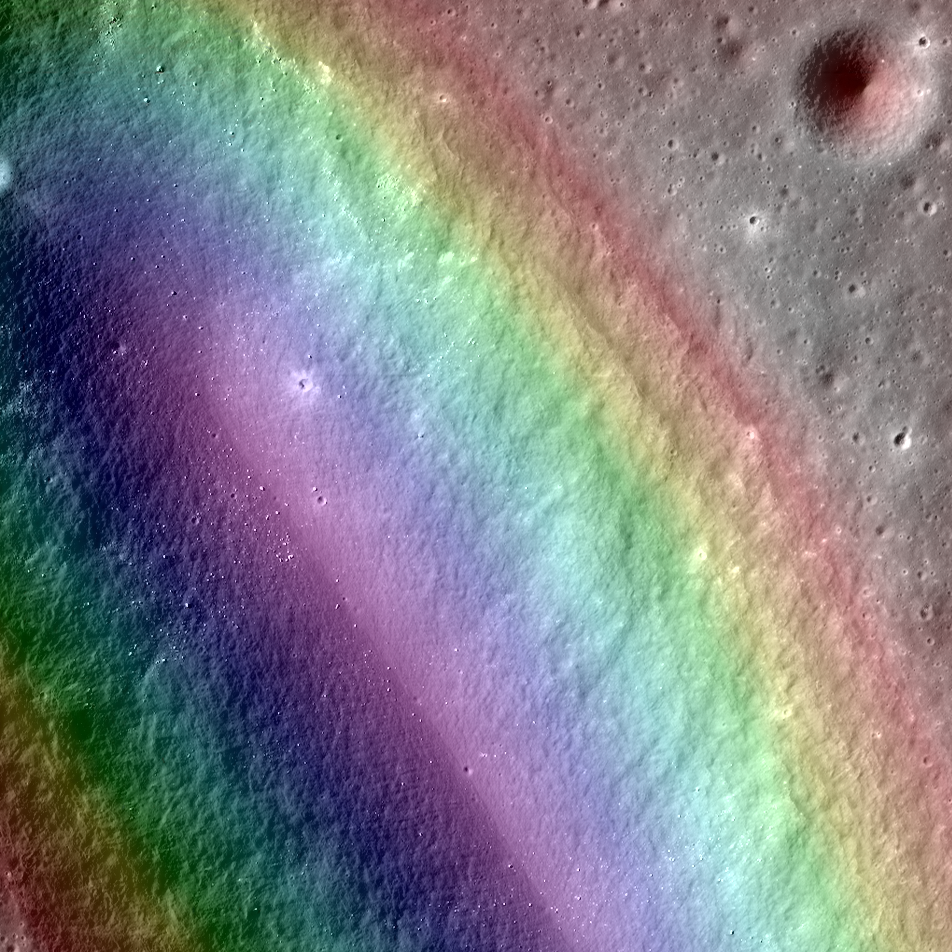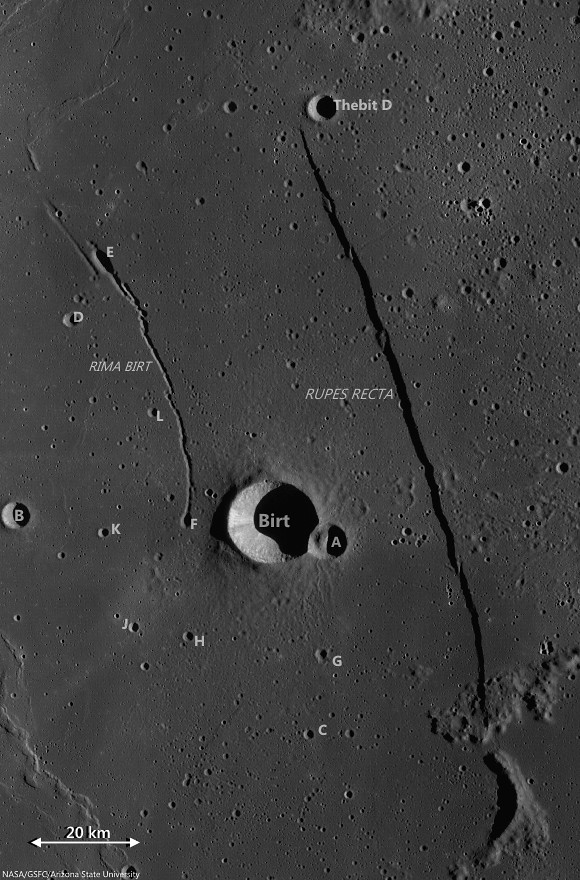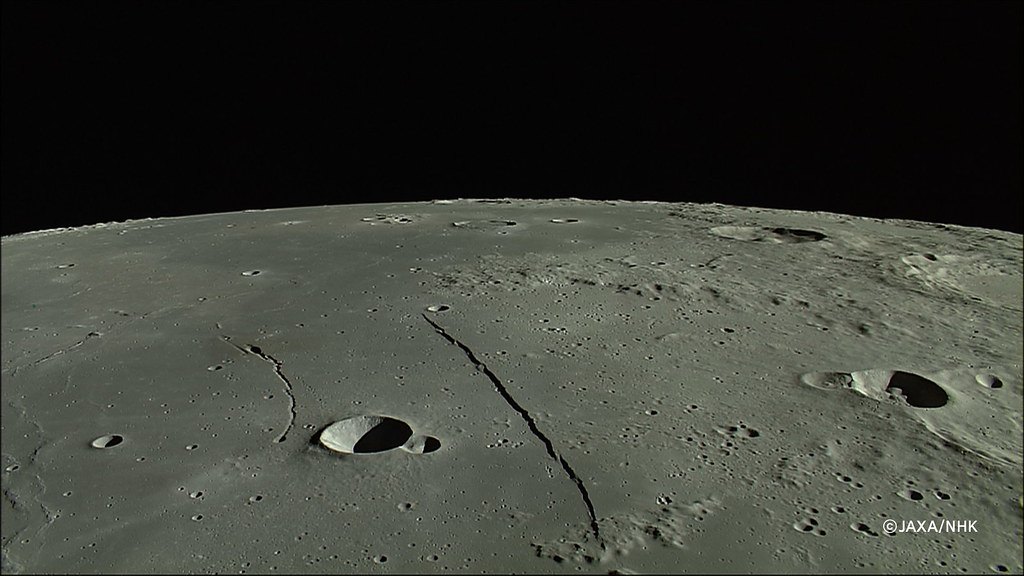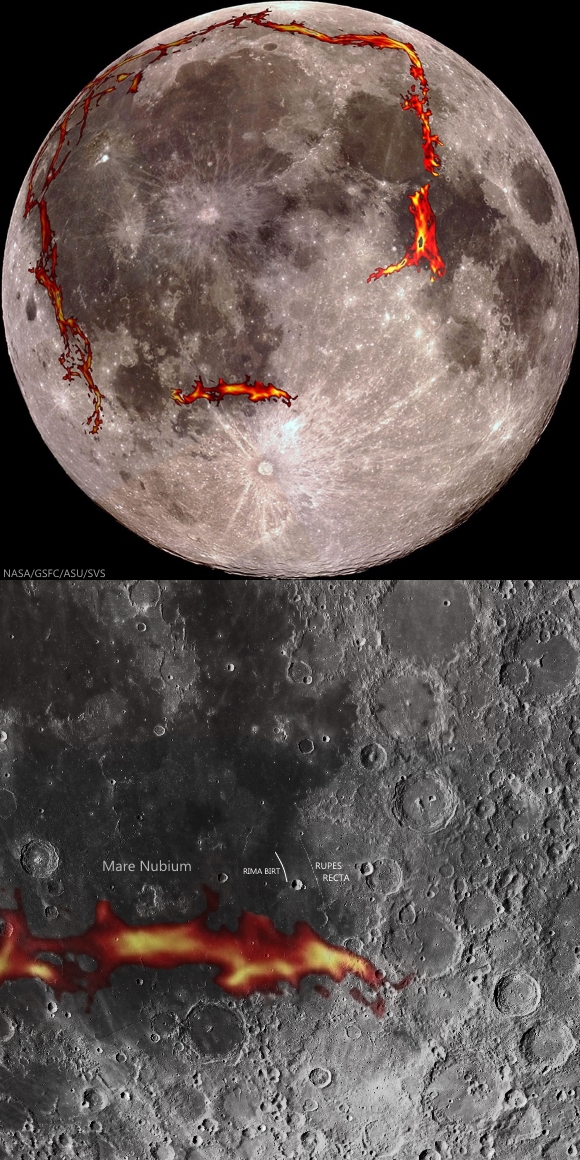 |
| LROC Narrow Angle Camera-derived Digital Terrain Model (DTM, color gradations superimposed) on a close-up view along the northeastern long axis of Birt E (5.34 km; 20.72°S, 350.337°E), the vent structure of Rima Birt, a sinuous rille in east Mare Nubium immediately west Rupes Recta. The vent is thought to be a source region for pyroclastic flows that traced out Rima Birt. The mare basalt, visible as slightly darker material in a fan spreading north from the vent, is older than 3.4 billion years. A roughly 3 km-wide field of view from LROC NAC mosaic M1144849711LR, LRO orbit 20750, January 20, 2014; 46.21° incidence angle, 84 cm resolution from 78.77 km over 20.69°S, 351.11°E [NASA/GSFC/Arizona State University]. |
LROC News System
Birt E (20.72°S, 350.337°E) was not created like most craters on the Moon; there was no meteorite impact. Lava sputtered out of this pyroclastic vent in Mare Nubium over 3.4 billion years ago, dispersing lava onto the surface and leaving the crater we see today.
How can we tell it is a volcanic vent and not an impact crater?
Impact craters and volcanic vents can be differentiated because vents often have an irregular or elongated shape (as with Birt E). Impact craters are usually circular in shape, created by the shockwave during an impact event.
How can we tell it is a volcanic vent and not an impact crater?
Impact craters and volcanic vents can be differentiated because vents often have an irregular or elongated shape (as with Birt E). Impact craters are usually circular in shape, created by the shockwave during an impact event.
 |
| Birt crater group and Rupes Recta, the eye-drawing structure in telescopic views of Mare Nubium. (See a larger, unnoted reproduction HERE.) LROC Wide Angle Camera (WAC) monochrome (604 nm) mosaic stitched from observations swept up over three sequential orbital passes June 10, 2011; incidence roughly 78° and 58 meters per pixel resolution, from 43 km [NASA/GSFC/Arizona State University]. |
 |
| East Mare Nubium, an orbital view north from 100 km altitude, an HDTV still from Japan's lunar orbiter Kaguya (SELENE-1) in 2008. (See the wallpaper-sized release HERE.) [JAXA/NHK/SELENE]. |
HERE.
Related Posts:





No comments:
Post a Comment
Welcome, Lunatics!